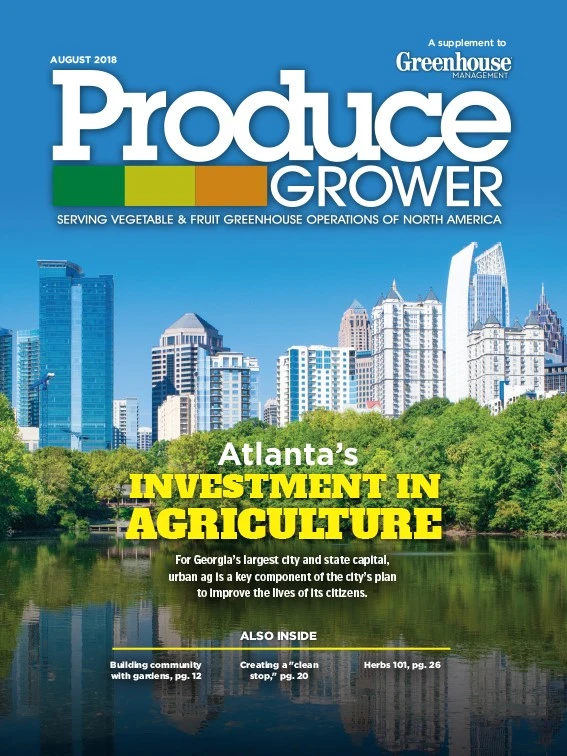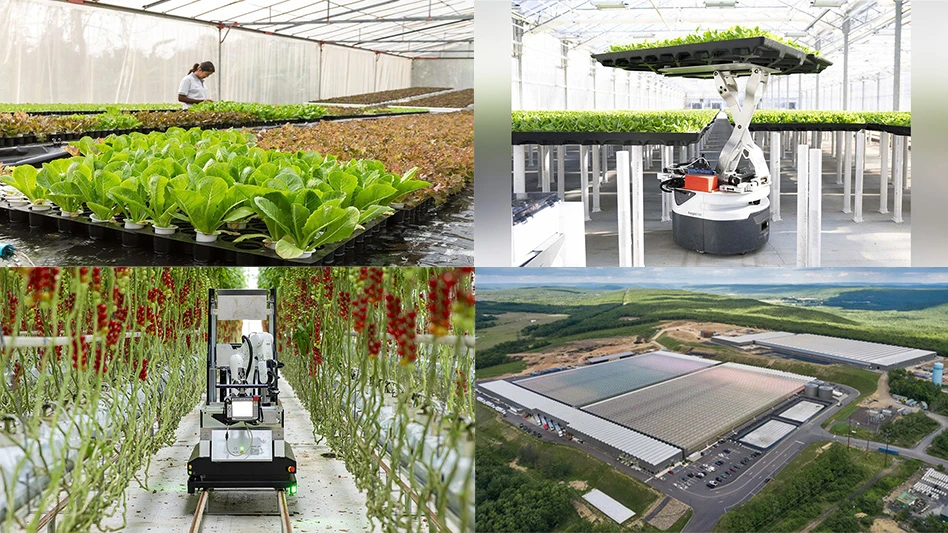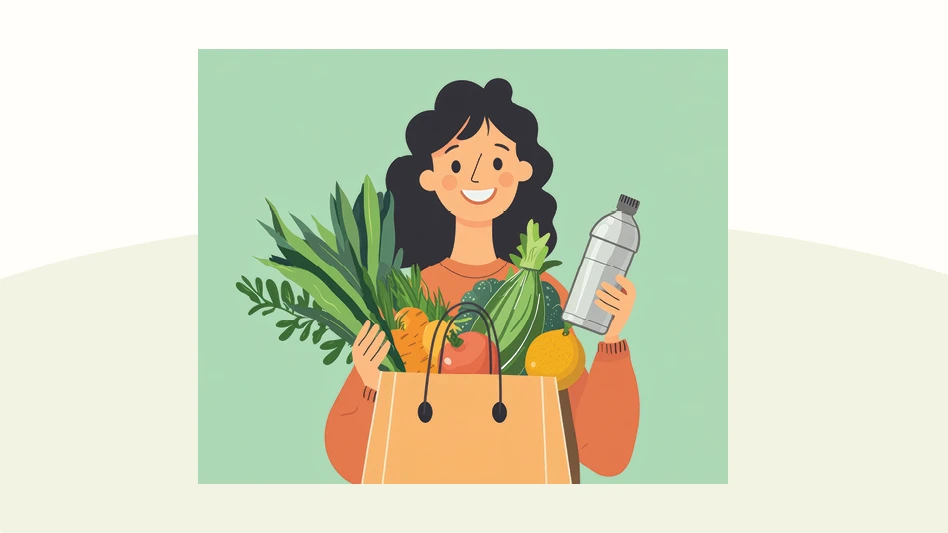
People throughout the nation are eager to grow food to feed themselves and their neighbors. Community gardens are popping up like wildfire to meet the needs of the many home growers who have limited access to quality soil, full sunlight, water and overall space. Many of these gardens are great spaces for those who simply want to garden in the company of others. The American Community Gardening Association estimates there are approximately 18,000 community gardens in the U.S. and Canada. These gardens come in a wide range of organizational formats including, but not limited to: spaces dedicated for certain neighborhoods, leased plots, school gardens, service (food security) gardens, vocational training gardens and guerrilla gardens (Figs. 1 and 2). Community gardens are very fun and exciting, but they often require a surprising amount of time and energy to thrive and become an integral part of the community over the long run. Commercial horticultural enterprises of all sizes can take some simple steps that can play a big role in helping new and existing community gardening initiatives become and remain a successful resource for your communities. This is a wonderful way to connect with some of the most enthusiastic gardeners in your area and support your community.
One of the easiest ways to support community gardens is to tell their story on your website or social media outlets. Building awareness is tremendously helpful, especially as community gardens are just getting established. Consider a live interview on Instagram or Facebook with the community garden organizers or a simple walking tour of the site. Sharing photos of best practices being demonstrated in the community garden is always popular (ex: unique use of vertical space, succession planting, aesthetically appealing layouts, etc.). You could set a goal to profile area community gardens once a month. Be sure to tag the garden and your business to increase your audience reach and build community connections.
Many greenhouses are in a good position to donate excess seed and plant material to community garden resource hubs. Your local Cooperative Extension office is often a great resource to connect you with community gardens that may be in greatest need of these excess materials. In some cases, communities have programs set up to make the donation process quite easy. For example, the Minnesota State Horticultural Society implements a plant redistribution program called Minnesota Green where they help get the word out about donations to leaders of public gardening initiatives.
Many greenhouses can donate excess seed and plant material to community garden resource hubs.
Retail garden centers could also encourage their customers to donate materials through gift registries for community gardens (ex: hoses, watering wands, soil amendments, trellising materials, compost, etc.). Many potential community garden supporters are much more enthusiastic about donating materials than money. They like to see how their dollars are being used and like to support local businesses too. If you don’t have the capacity to do a registry, consider the Christmas is for Kids model, but instead of a Christmas tree with gift wishes for individual kids, have tags for supplies needed by specific community gardens. People can buy the materials at your store too!

Your employees may also enjoy working in community gardens, and they have knowledge and talent to share with new gardeners (Fig. 3). Some operations, such as Bell Nursery in Baltimore, set aside employee work days for volunteering at a community or school garden. In 2015, their initial community garden project involved building five large raised beds in a vacant city lot shortly after the Baltimore riots. “The following year, we expanded to a second location to assist a community leader that was renovating and reviving a center for youth,” says Susan Summers of Bell Nursery. “Four more raised vegetable gardens and flower beds were planted and now both communities are harvesting hundreds of pounds of vegetables every summer! These areas are all considered ‘food deserts’ as well.” They plan to add a third garden this year at an adult transitioning home.
If you are interested in donating produce to local food pantries, you and your employees could sponsor a plot in a local community garden in which the food is donated to the hungry (Fig. 4). One company in Maine, IDEXX, has expanded on this idea by creating a company-sponsored community garden where employees have paid time to work in raised beds at their corporate offices and food grown is donated to food security agencies. “It’s really strengthened them as employees and work teams . . . a win-win for the business and the people who need the food,” says Amy Witt, UMaine Cooperative Extension horticulturist who helped them get established.

Another approach to enhancing food security efforts is to serve as a drop-off site for produce donation for hunger relief organizations. Many community gardeners are interested in donating excess produce from their gardens, but aren’t available to drop it off at food pantries during the specific hours they’re open. Normal retail business hours leave a wider window of opportunity for donors to connect their excess food with neighbors in need. Simply have a good place to temporarily store donated food and make arrangements with a food security agency to stop by to pick up donations on a regular basis.
Horticultural employees might want to serve on a community garden board of directors to provide technical support. This support helps to develop the literal and figurative foundation of the garden. The Yarmouth, Maine, community garden has benefited from the support of a board member from the green industry. Retail professionals in particular often have good insight about how to assess the needs of the community because they might hear of community garden inquiries from their customer base.

If you own a retail garden center, you can offer a wide variety of services for community gardens. Your greenhouse can serve as a meeting space in winter for planning meetings. People can also sign up for information about community gardens at a central location. Simply having a small resource space can help your customers connect with opportunities that will help them grow and get involved in their community. Some retail operations have roundup days for community gardens. If customers are interested, they can round up their total purchase amount to the nearest $5 increment to donate to a community or school garden project. You can also offer discounts to certified community garden volunteers and educators. Discounts, no matter how large or small, can serve as a great incentive and thank you to those who make community gardens happen. Volunteers are the backbone of community gardens. Make sure they stick around and feel appreciated! Finally, if you host public events, you might consider offering an event where the suggested donations go to a gardening non-profit. This is a great opportunity to bring in new customers, and it also raises awareness about area service agencies.

Explore the August 2018 Issue
Check out more from this issue and find your next story to read.
Latest from Produce Grower
- Cox Farms partners with Feeding America to tackle food insecurity
- Ethical labor practices supported by third-party certification programs
- Relationship building
- Growing small to trial leafy greens
- IFPA expands team, launches strategic plan
- Downy mildew
- Thought Leaders to Share Insights at Clemson FRESH Food, Packaging & Sustainability Summit
- Ventilation optimization





